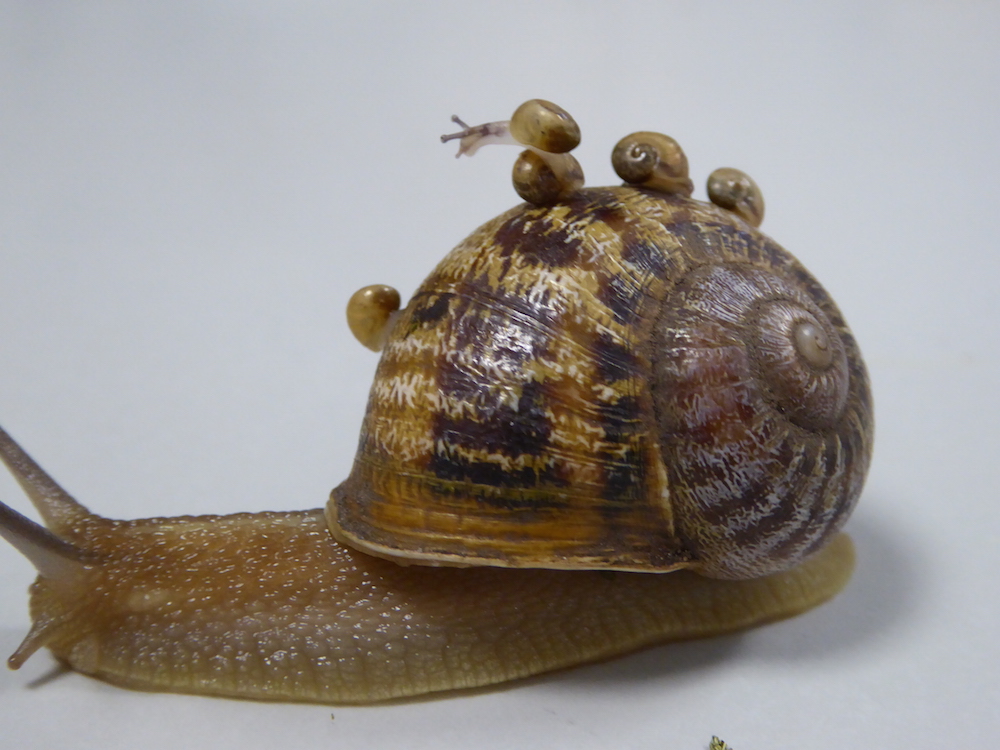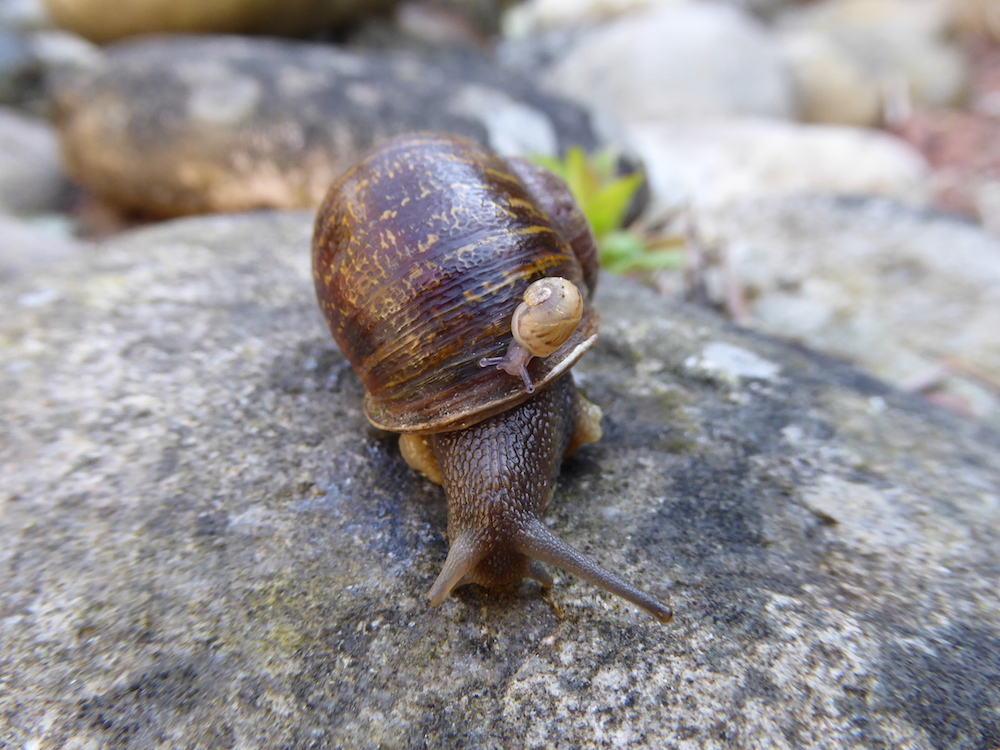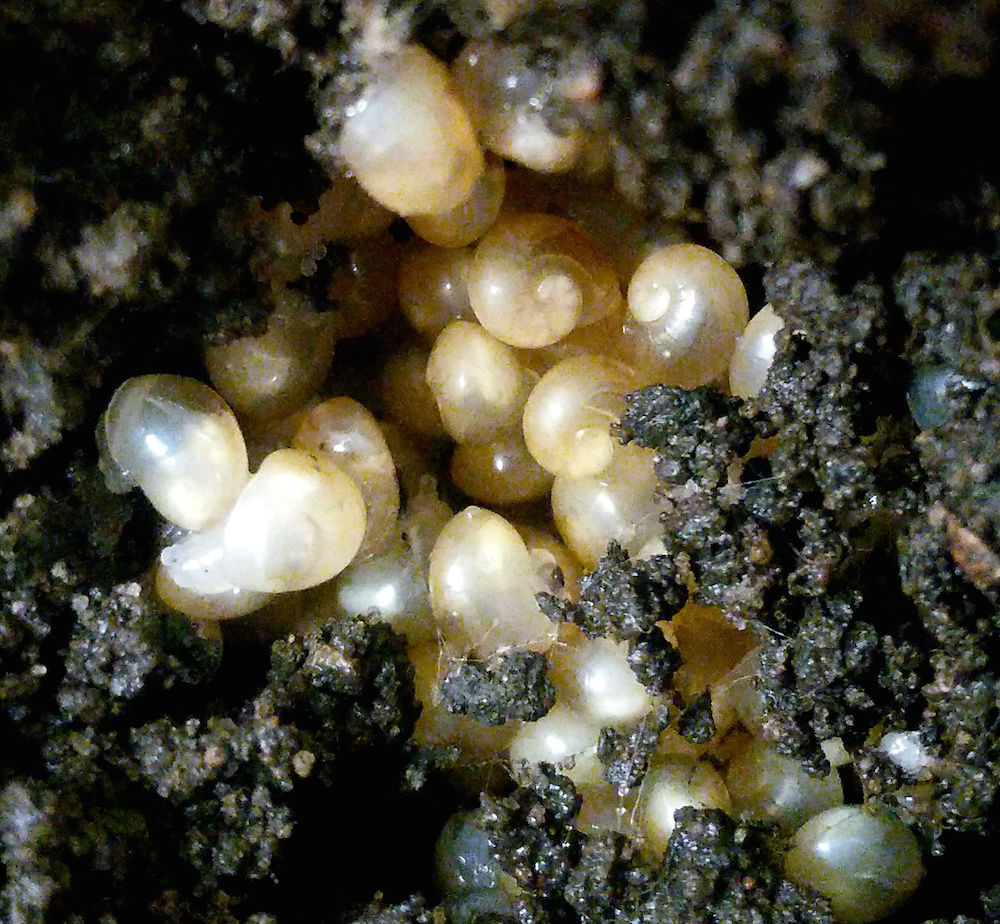Strange Snail Love Triangle Leaves 'Lefty' Jeremy Without a Partner

It may sound like the plot of a twisted romantic comedy, but after a public campaign to find Jeremy — a snail with a rare left-spiraling shell — another "lefty" partner, the poor snail is still looking for love.
Two "lefty" suitors that were sent to woo Jeremy have hooked up with each other, leaving Jeremy out in the cold.
Even more intriguing (at least for scientists) is that the snail babies of this renegade couple have right-spiraling (or dextral) shells, unlike their lefty (or sinistral) parents, said Angus Davison, an associate professor and reader in evolutionary genetics at the University of Nottingham's School of Life Sciences. [See Photos of Jeremy the Snail and His Star-Crossed Suitors]
Jeremy's love saga began in October 2016, when Davison asked the public to tweet the hashtag #SnailLove to help the garden snail (Cornu aspersum) find a partner. As a left-spiraled snail, Jeremy's organs (including his reproductive organs) are on the opposite side, meaning he needs a sinistral partner in order to reproduce.
Amazingly, the public responded, finding two potential partners for Jeremy: a snail named Lefty from Ipswich, England; and Tomeu, a sinistral snail from Majorca, Spain, that was saved moments before becoming someone's dinner.

Once the snails arrived in Nottingham, Davison was eager to set the mood for the snails. In 2016, before finding Jeremy, he and his colleagues published a study in the journal Current Biology, describing a gene in a pond snail (Lymnaea stagnalis) that determined whether its shell spiraled in a clockwise or counterclockwise direction.
Davison is curious whether the spiral direction and asymmetry of organs in Jeremy's species of snail are the same as they are in L. stagnalis, he said. He hopes to determine this by studying several generations of lefty garden snails.
Sign up for the Live Science daily newsletter now
Get the world’s most fascinating discoveries delivered straight to your inbox.
In turn, this discovery may help researchers determine whether gene variants or developmental glitches are responsible for organ reversal in humans — a condition known as situs inversus, Davison said.
Romantic mood
At first, the snails didn't show any interest in each other, so Davison put them in a refrigerator to simulate winter (when snails hibernate), and took them out three months later, to simulate spring and summer, (when snails mate).
Soon after, Tomeu and Lefty shacked up, ignoring poor Jeremy, and laid three clutches of eggs. Snails are hermaphrodites, and can either mother or father a batch of eggs.

More than 170 babies hatched from the first batch, which was fathered by Lefty and laid by Tomeu in April, Davison said. These babies have dextral shells, which isn't entirely surprising because of a phenomenon called "maternal to zygotic transition" (a zygote is a fertilized egg), he said.
Whereas a sperm has only DNA, an egg contains "cytoplasm, proteins and all kinds of things" in addition to DNA, Davison said. The egg's additional contents can influence the offspring's growth during the first few cell divisions. In this case, Lefty's mother probably had gene variants for a sinistral shell, and passed this genetic information on to her babies, Davison said. [Amazing Mollusks: Images of Strange & Slimy Snails]
However, Lefty is likely a heterozygote, meaning she has at least one "lefty" gene and one "righty" gene. The righty gene is dominant, so she likely influenced her offspring early in development, making them rightys, just as her "lefty" mother influenced her to have a sinistral shell.
After more snail breeding, Davison hopes to get individuals that have two versions of the lefty gene. Then, he and his colleagues can determine which gene is at play, he said.
In the meantime, Jeremy might get some action, too. "I think, actually, we'll get Jeremy to mate," Davison said. "Jeremy wasn't doing an awful lot but subsequently has been looking a bit more healthy."
Original article on Live Science.

Laura is the archaeology and Life's Little Mysteries editor at Live Science. She also reports on general science, including paleontology. Her work has appeared in The New York Times, Scholastic, Popular Science and Spectrum, a site on autism research. She has won multiple awards from the Society of Professional Journalists and the Washington Newspaper Publishers Association for her reporting at a weekly newspaper near Seattle. Laura holds a bachelor's degree in English literature and psychology from Washington University in St. Louis and a master's degree in science writing from NYU.
Scientists built largest brain 'connectome' to date by having a lab mouse watch 'The Matrix' and 'Star Wars'
Archaeologists may have discovered the birthplace of Alexander the Great's grandmother
Elusive neutrinos' mass just got halved — and it could mean physicists are close to solving a major cosmic mystery









